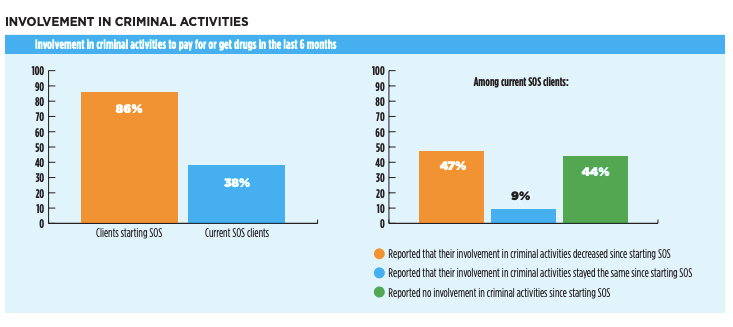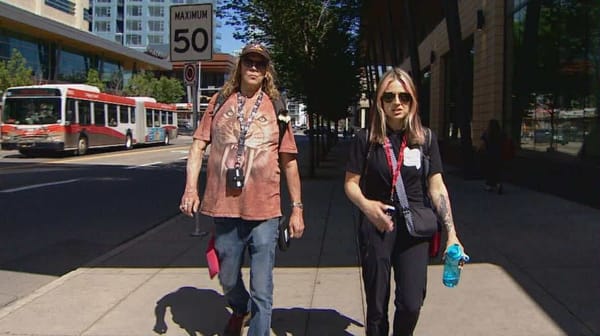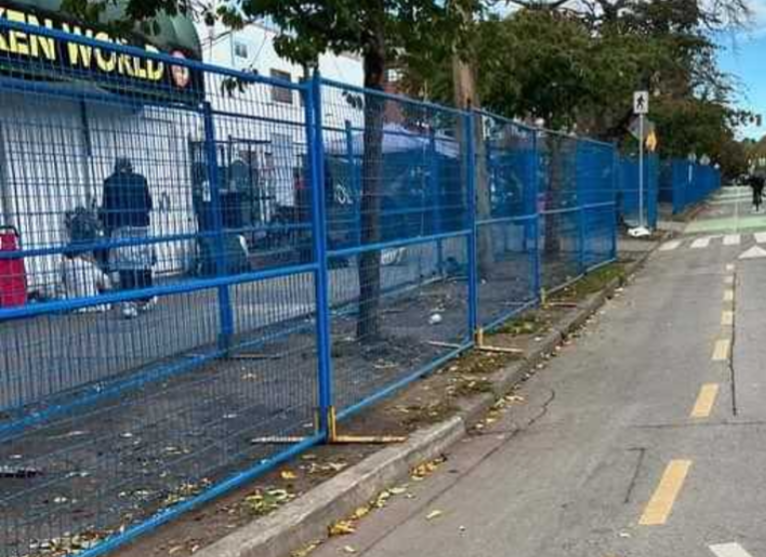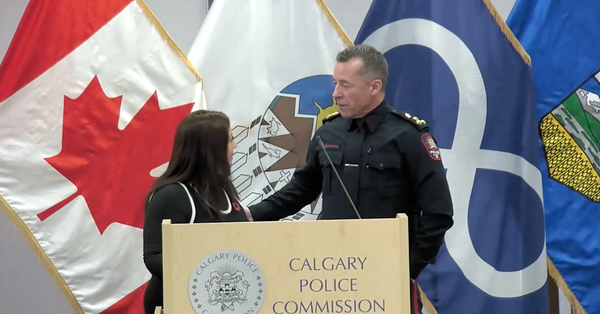Regulated drug supply is public safety
A presentation I delivered to Calgary City Council during budget hearings in November, 2022.
It’s been a tough week. The link felt ever more visible between the Vancouver Police crackdown on Hastings and the war drumming for police violence against unhoused people by Danielle Smith, Pierre Poilievre and even Jeromy Farkas, down off his mountain of enlightenment. Last night’s UCP town hall, with Ministers Milliken and Ellis loudly confirming many of our fears about involuntary abstinence.
We need a regroup: something that cuts through the political and policing bullshit. The way a dung beetle might burrow in, dig out a nest and watch its brood feast.
This presentation to Calgary City Council highlights a low-barrier strategy that any city in Canada could roll out in parallel to these endless police funding increases, to address the “prolific offender" narrative with (mostly) harm reduction thinking.
It's not perfect messaging. It reinforces a trope about the link between people who use drugs and property crime. It isn’t explicit that providing medicine is only one element of basic needs: housing, food security, safety from threats including police.
But having spoken with hundreds, most business owners are asking for authentic solutions, not hand-waving — and this is one. Meanwhile, policing is already doing what it wants, with or without public support. We need to activate new segments of society to push back: even better if we can flip narratives like “prolific offenders” that are eagerly promoted by police.
We need to take up space in the public safety battle. People who use drugs deserve safety as much as anyone.
And the data tell us widespread access to safe supply would drive measurably improved health care and public safety outcomes — for everyone.
I hope you have a good weekend. I'll be thinking of the folks on Hastings, of my friends at VANDU and of everyone who isn't being offered a better choice than a bedbug-infested SRO or a tent.
“My name is Euan Thomson, and I’m here representing EACH+EVERY: Businesses for Harm Reduction. It’s a national coalition of businesses rooted here in Calgary. We have 50 to 60 businesses across this city, in many of your wards.
I just wanted to start by addressing a misconception that has repeatedly arisen during these hearings: Referring to the crisis playing out in our streets and homes as an addictions crisis misrepresents the data, which does not show an increase in addictions above baseline levels.
We are not in an addictions crisis. We are in a poisoning massacre.
What I’ll discuss today is a more hopeful approach than trying the same old tricks over and over – and these address two of the top four bullet points in City Admin’s budget: transit safety and support for small businesses.
Hopefully, we’ll get to a point where city-implemented safe supply specifically targeted to people at high risk of overdose or those who rely on property crime will become a reality in this city.
Regulated drugs aren’t charity for criminals — they’re common sense for communities.
The illegal drug market kills Calgarians by the hundreds each year, while our legal system criminalizes people most at risk of succumbing to accidental drug poisoning.
Rather than supporting options that centre diverse needs of individuals, tax dollars flood into services designed around a uniform goal of abstinence. Our communities suffer from ambulance shortages, property crime and community safety perceptions, but our responses to these lack any imagination.
We all hear about break-ins at dentists, jewelry stores, pharmacies, liquor stores, corner stores, and of course, parked vehicles. But why settle for failed, century-old strategies that rely entirely on policing and treatment?
It's time to open more options for people.
At a recent town hall, Calgary Police showed us how 90% of property crime is committed by around 100 active individuals — so-called “prolific offenders.” According to the police, these folks engage in property crime primarily to satisfy drug habits, so we could think of them as high-needs individuals.
“Prolific offenders” are a golden opportunity in crime prevention because meeting their substance and support needs would reduce their reliance on property crime.
Providing regulated drugs might cost $100 a day per person (closer to $20 with pharmaceuticals) and would provide these individuals an extra access point to meet their health or housing needs.
Contrast that with the cost of a single break-in: repairs and insurance, painstaking hours of police work, the odd arrest leading to court time and $150 a day to incarcerate. The typical outcome is that most of these folks return to property crime, the most readily available option to meet their needs.
The numbers aren’t comparable. For 100 individuals, we’re talking 1% of the Calgary Police budget and the opportunity to reduce the frequency and intensity of most property crime across the city.
It’s not charity for criminals. It’s common sense for communities.
It's already working elsewhere. The London Intercommunity Health Centre’s Safe Opioid Supply program data shows enormous promise for reducing criminal involvement among people with access to regulated opioids. In Victoria, SAFER reports similar positive outcomes.

Calgary is in a unique position with business and community associations just this month calling for safer spaces and service access for folks struggling to survive the unregulated drug and housing crises. Businesses and community members in Beltline and elsewhere tell us they want solutions, not political hand-waving.
All levels of government can take immediate action, but I’ll focus on this room:
- Calgary Police Commission: Guide Calgary Police on the permissibility of community-accountable, non-medicalized compassion clubs mandated to replace street drugs with regulated drugs and reduce property crime.
- Calgary City Council: Vote on a motion for city-wide decriminalization that allocates funding for people surviving the toxic drug crisis to lead the framing of a federal application. Next, double the Community Safety Investment Framework and direct half the fund to compassion clubs.
Our communities and businesses are taking property crime on the chin while shouldering inflation and relentless viral infections, so let’s act courageously. At best, we gain improved community health, safety, inclusivity and cohesion. At worst, we lose fewer neighbours to preventable drug poisoning.”





